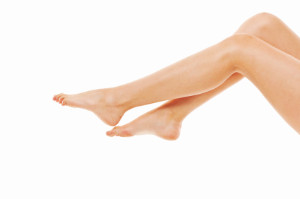Blog
Reasons to Have Foot Surgery
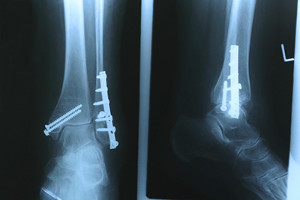 When is comes to podiatric care, podiatrists strive to exhaust all nonsurgical treatment options first. However, there are times and many reasons why people may need foot surgery. Some of these include bunions, which are bony bumps that form on the base of big toe. Surgery may involve straightening the big toe if symptoms continue for a long period of time. Permanently bent toes, also called hammertoes, can be eased by removing the deformed joint between the toes, which improves flexibility. Rheumatoid arthritis can leave the joints in the foot damaged by inflammation. The exact procedure will depend on the severity of this condition, but surgery is commonly performed on the big toe in order to make walking easier. If the ankle is damaged, ankle fusion may be necessary to fuse the talus bone to the tibia, thereby relieving pain in the ankle. Screws are used to hold the bones together, and will heal for 12-14 weeks. Normal shoes can be worn soon afterward and it will be easier to walk. Please consult with a podiatrist to discuss all options when it comes to foot-related conditions.
When is comes to podiatric care, podiatrists strive to exhaust all nonsurgical treatment options first. However, there are times and many reasons why people may need foot surgery. Some of these include bunions, which are bony bumps that form on the base of big toe. Surgery may involve straightening the big toe if symptoms continue for a long period of time. Permanently bent toes, also called hammertoes, can be eased by removing the deformed joint between the toes, which improves flexibility. Rheumatoid arthritis can leave the joints in the foot damaged by inflammation. The exact procedure will depend on the severity of this condition, but surgery is commonly performed on the big toe in order to make walking easier. If the ankle is damaged, ankle fusion may be necessary to fuse the talus bone to the tibia, thereby relieving pain in the ankle. Screws are used to hold the bones together, and will heal for 12-14 weeks. Normal shoes can be worn soon afterward and it will be easier to walk. Please consult with a podiatrist to discuss all options when it comes to foot-related conditions.
Foot surgery is sometimes necessary to treat a foot ailment. To learn more, contact Dr. Kevin Davis of Davis Foot & Ankle Centers. Our doctor will assist you with all of your foot and ankle needs.
When Is Surgery Necessary?
Foot and ankle surgery is generally reserved for cases in which less invasive, conservative procedures have failed to alleviate the problem. Some of the cases in which surgery may be necessary include:
- Removing foot deformities like bunions and bone spurs
- Severe arthritis that has caused bone issues
- Cosmetic reconstruction
What Types of Surgery Are There?
The type of surgery you receive will depend on the nature of the problem you have. Some of the possible surgeries include:
- Bunionectomy for painful bunions
- Surgical fusion for realignment of bones
- Neuropathy decompression surgery to treat nerve damage
Benefits of Surgery
Although surgery is usually a last resort, it can provide more complete pain relief compared to non-surgical methods and may allow you to finally resume full activity.
Surgical techniques have also become increasingly sophisticated. Techniques like endoscopic surgery allow for smaller incisions and faster recovery times.
If you have any questions please feel free to contact one of our offices located in Springfield, and White House, TN, . We offer the newest diagnostic and treatment technologies for all your foot and ankle needs.
Read more about Foot SurgeryWhat to Look For When Buying Running or Walking Shoes
 Typically, running shoes are made with considerably heavier cushioning than walking shoes. Fitness walkers have different needs than runners, as walking has much less impact on the feet. One thing to look for when buying running shoes is to make sure the foot can bend in the shoe. Another suggestion is to look for a shoe with a low heel; this can support runners who land on the balls of their feet. Cushioned shoes are favored for those who walk long distances or on hard surfaces. Additionally, shoes that are made from lighter materials will be more comfortable because they are not as heavy.
Typically, running shoes are made with considerably heavier cushioning than walking shoes. Fitness walkers have different needs than runners, as walking has much less impact on the feet. One thing to look for when buying running shoes is to make sure the foot can bend in the shoe. Another suggestion is to look for a shoe with a low heel; this can support runners who land on the balls of their feet. Cushioned shoes are favored for those who walk long distances or on hard surfaces. Additionally, shoes that are made from lighter materials will be more comfortable because they are not as heavy.
For more information about walking shoes versus running shoes, consult with Dr. Kevin Davis from Davis Foot & Ankle Centers. Our doctor can measure your feet to determine what your needs are and help you find an appropriate pair of footwear.
Foot Health: The Differences between Walking & Running Shoes
There are great ways to stay in shape: running and walking are two great exercises to a healthy lifestyle. It is important to know that running shoes and walking shoes are not interchangeable. There is a key difference on how the feet hit the ground when someone is running or walking. This is why one should be aware that a shoe is designed differently for each activity.
You may be asking yourself what the real differences are between walking and running shoes and the answers may shock you.
Differences
Walking doesn’t involve as much stress or impact on the feet as running does. However, this doesn’t mean that you should be any less prepared. When you’re walking, you land on your heels and have your foot roll forward. This rolling motion requires additional support to the feet.
Flexibility – Walking shoes are designed to have soft, flexible soles. This allows the walker to push off easily with each step.
If you have any questions, please feel free to contact one of our offices located in Springfield, and White House, TN, . We offer the newest diagnostic and treatment technologies for all your foot care needs.
Read more about Differences between Walking and Running ShoesSymptoms of Gout
 If you experience sudden attacks of swelling and severe pain, you may have gout. Gout is a form of arthritis in which small crystals form around the joints and may lead to kidney stones. A buildup of uric acid in the blood leads to inflammation and is the cause of gout. Gout typically affects the toes and ankles, in addition to the knees and fingers.The joints become swollen, and the skin in the affected area may appear red and shiny. Gout occurs in attacks and can be debilitating and extremely painful. Lowering uric acids levels may provide a long-term solution, which is commonly done through change of diet and medication. Ice packs are generally used during an attack for relief. Please consult a podiatrist if you have difficulty walking or have severe pain in your feet.
If you experience sudden attacks of swelling and severe pain, you may have gout. Gout is a form of arthritis in which small crystals form around the joints and may lead to kidney stones. A buildup of uric acid in the blood leads to inflammation and is the cause of gout. Gout typically affects the toes and ankles, in addition to the knees and fingers.The joints become swollen, and the skin in the affected area may appear red and shiny. Gout occurs in attacks and can be debilitating and extremely painful. Lowering uric acids levels may provide a long-term solution, which is commonly done through change of diet and medication. Ice packs are generally used during an attack for relief. Please consult a podiatrist if you have difficulty walking or have severe pain in your feet.
Gout is a foot condition that requires certain treatment and care. If you are seeking treatment, contact Dr. Kevin Davis from Davis Foot & Ankle Centers. Our doctor will treat your foot and ankle needs.
What Is Gout?
Gout is a type of arthritis caused by a buildup of uric acid in the bloodstream. It often develops in the foot, especially the big toe area, although it can manifest in other parts of the body as well. Gout can make walking and standing very painful and is especially common in diabetics and the obese.
People typically get gout because of a poor diet. Genetic predisposition is also a factor. The children of parents who have had gout frequently have a chance of developing it themselves.
Gout can easily be identified by redness and inflammation of the big toe and the surrounding areas of the foot. Other symptoms include extreme fatigue, joint pain, and running high fevers. Sometimes corticosteroid drugs can be prescribed to treat gout, but the best way to combat this disease is to get more exercise and eat a better diet.
If you have any questions please feel free to contact one of our offices located in Springfield, and White House, TN, . We offer the newest diagnostic and treatment technologies for all your foot and ankle needs.
Read more about Everything You Need to Know About GoutCauses of Ingrown Toenails
When there is an imbalance in the size of the nail and the enlargement of the skin edge, this may cause an ingrown toenail. Reasons for this may include the nail naturally growing inward, improper shoe fitting, and hereditary conditions. Other causes may be from an improper pedicure and/or poor foot hygiene. Common symptoms can be tenderness of the nail, swelling and redness. Additionally, drainage and pus may occur if there is an infection involved. Home remedies may include soaking the affected toe in lukewarm water, or applying antibacterial ointments for bacterial infections and antifungal ointments for fungal infections. Those who have diabetes or poor circulation are advised to consult a podiatrist even if the symptoms appear to be mild.
Ingrown toenails can become painful if they are not treated properly. For more information about ingrown toenails, contact Dr. Kevin Davis of Davis Foot & Ankle Centers. Our doctor can provide the care you need to keep you pain-free and on your feet.
Ingrown Toenails
Ingrown toenails occur when a toenail grows sideways into the bed of the nail, causing pain, swelling, and possibly infection.
Causes
- Bacterial infections
- Improper nail cutting such as cutting it too short or not straight across
- Trauma to the toe, such as stubbing, which causes the nail to grow back irregularly
- Ill-fitting shoes that bunch the toes too close together
- Genetic predisposition
Prevention
Because ingrown toenails are not something found outside of shoe-wearing cultures, going barefoot as often as possible will decrease the likeliness of developing ingrown toenails. Wearing proper fitting shoes and using proper cutting techniques will also help decrease your risk of developing ingrown toenails.
Treatment
Ingrown toenails are a very treatable foot condition. In minor cases, soaking the affected area in salt or antibacterial soaps will not only help with the ingrown nail itself, but also help prevent any infections from occurring. In more severe cases, surgery is an option. In either case, speaking to your podiatrist about this condition will help you get a better understanding of specific treatment options that are right for you.
If you have any questions please feel free to contact one of our offices located in Springfield, and White House, TN, . We offer the newest diagnostic and treatment technologies for all your foot and ankle needs.
Read more about Ingrown Toenail CareToenail Care for the Elderly
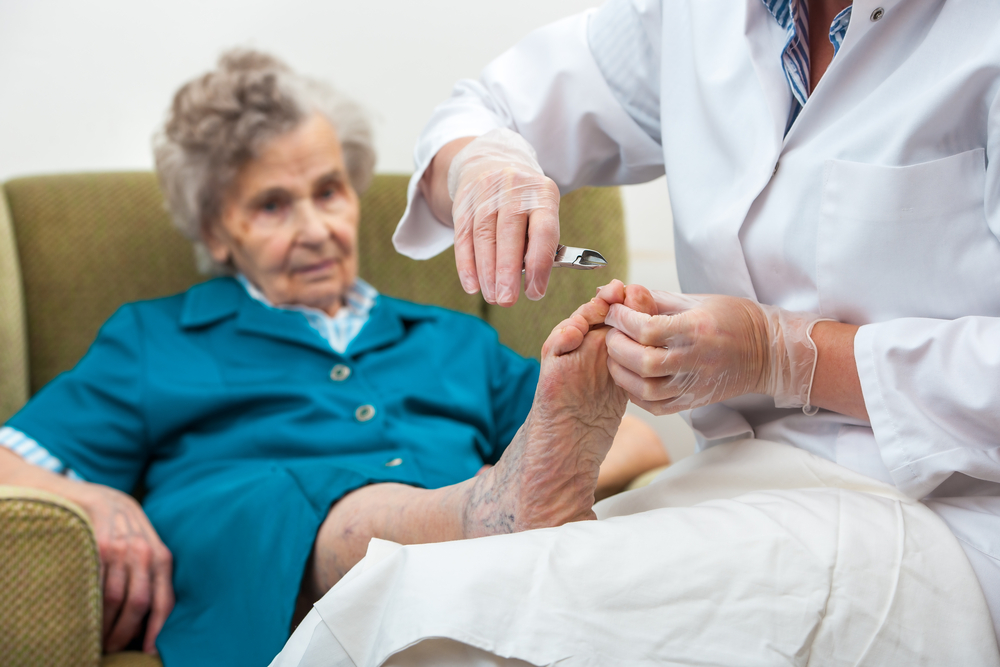 Geriatric (elderly) people may be prone to foot problems, which may include ingrown toenails, corns, and calluses. A reason for this may be their inability to cut their own toenails due to poor eyesight or loss of mobility. A qualified caregiver should be able to cut toenails properly. Ideally, toenails should be kept short, as more problems tend to arise if the nails are too long. The shorter they are, the less risk there is of breaking a nail. As we age, it’s beneficial to stay healthy and active. However, it’s important to remember to practice proper foot care. A podiatrist should be consulted to learn the best options for correct maintenance and treatments.
Geriatric (elderly) people may be prone to foot problems, which may include ingrown toenails, corns, and calluses. A reason for this may be their inability to cut their own toenails due to poor eyesight or loss of mobility. A qualified caregiver should be able to cut toenails properly. Ideally, toenails should be kept short, as more problems tend to arise if the nails are too long. The shorter they are, the less risk there is of breaking a nail. As we age, it’s beneficial to stay healthy and active. However, it’s important to remember to practice proper foot care. A podiatrist should be consulted to learn the best options for correct maintenance and treatments.
If you need your feet checked, contact Dr. Kevin Davis of Davis Foot & Ankle Centers. Our doctor will attend to all of your foot and ankle needs and provide you with quality treatment.
Geriatrics and Podiatry
When people age, some common issues that may occur are bone density loss, dry skin, poor circulation, and rough brittle nails. These issues may also affect your foot health if the necessary steps are not taken to alleviate the problems.
It is important to take care of your feet because feet that are injured or diseased can affect your overall health. Having painful feet hinders your ability to do daily activities or may decrease your willingness to do the things that you need to do.
Visiting Your Geriatrician
As we age, health problems become more likely, so it is essential to visit your doctor for check-ups to ensure that you are doing the best you can to take care of your health. It is recommended to check your feet frequently for any possible cuts, bruises, swelling, corns or any other irregularities.
Taking Care of Elderly Feet
Cracked or dry feet can be treated by applying moisturizer often. It is also important not to wear old socks because the older the sock is, the higher the possibility there will be that there is bacteria there. Wear fresh socks and make sure they fit properly.
Proper foot health means that you can have a more active lifestyle and you will not be bogged down by pain. Foot health also leads to good circulation, which is paramount for overall health.
If you have any questions, please feel free to contact one of our offices located in Springfield, and White House, TN, . We offer the newest diagnostic tools and technology to treat your foot and ankle needs.
Read more about Geriatrics and PodiatryWhat is Hammertoe and Mallet Toe?
 An imbalance in either the muscles, ligaments, and tendons in the foot that keep the toes straight can cause hammertoe or mallet toe. Causes of this imbalance can stem from improperly-fitted shoes, trauma, and even foot structure. An abnormal bend in the middle joint of a toe is called hammertoe. When the joint nearest to the toenail is affected, this condition is called mallet toe. Poorly-fitted shoes can result in the toes becoming compressed which can result in the condition. Simply wearing properly-fitted footwear may cause the toes to become uncompressed and restore balance in the foot. However, surgery may be needed if the issue stems from trauma or foot structure, and if symptoms become more severe or do not go away.
An imbalance in either the muscles, ligaments, and tendons in the foot that keep the toes straight can cause hammertoe or mallet toe. Causes of this imbalance can stem from improperly-fitted shoes, trauma, and even foot structure. An abnormal bend in the middle joint of a toe is called hammertoe. When the joint nearest to the toenail is affected, this condition is called mallet toe. Poorly-fitted shoes can result in the toes becoming compressed which can result in the condition. Simply wearing properly-fitted footwear may cause the toes to become uncompressed and restore balance in the foot. However, surgery may be needed if the issue stems from trauma or foot structure, and if symptoms become more severe or do not go away.
Hammertoe
Hammertoes can be a painful condition to live with. For more information, contact Dr. Kevin Davis from Davis Foot & Ankle Centers. Our doctor will answer any of your foot- and ankle-related questions.
Hammertoe is a foot deformity that affects the joints of the second, third, fourth, or fifth toes of your feet. It is a painful foot condition in which these toes curl and arch up, which can often lead to pain when wearing footwear.
Symptoms
- Pain in the affected toes
- Development of corns or calluses due to friction
- Inflammation
- Redness
- Contracture of the toes
Causes
Genetics – People who are genetically predisposed to hammertoe are often more susceptible
Arthritis – Because arthritis affects the joints in your toes, further deformities stemming from arthritis can occur
Trauma – Direct trauma to the toes could potentially lead to hammertoe
Ill-fitting shoes – Undue pressure on the front of the toes from ill-fitting shoes can potentially lead to the development of hammertoe
Treatment
Orthotics – Custom made inserts can be used to help relieve pressure placed on the toes and therefore relieve some of the pain associated with it
Medications – Oral medications such as anti-inflammatories or NSAIDs could be used to treat the pain and inflammation hammertoes causes. Injections of corticosteroids are also sometimes used
Surgery – In more severe cases where the hammertoes have become more rigid, foot surgery is a potential option
If you have any questions please contact one of our offices located in Springfield, and White House, TN, . We offer the newest diagnostic and treatment technologies for all your foot and ankle needs.
Read more about What Are Hammertoes?Finding the Right Pair of Shoes For You
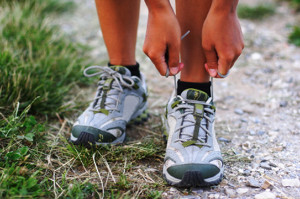 When it comes to shopping for running shoes, there is no perfect shoe that works for everyone. Everyone has a different foot type so just because you’re the same size as someone else, it doesn’t mean their shoe will fit you correctly. Higher prices or brand names also don’t guarantee a great shoe either. There are certain qualities to look for when shoe shopping though. Shoes should be comfortable, especially for long periods of time. Knowing your foot type, such as whether you overpronate or have a neutral foot, can help as well. A podiatrist can help determine your foot type and can also make recommendations about what shoes to wear. A good pair of shoes should provide enough space for your toes, be breathable and comfortable, and support your feet.
When it comes to shopping for running shoes, there is no perfect shoe that works for everyone. Everyone has a different foot type so just because you’re the same size as someone else, it doesn’t mean their shoe will fit you correctly. Higher prices or brand names also don’t guarantee a great shoe either. There are certain qualities to look for when shoe shopping though. Shoes should be comfortable, especially for long periods of time. Knowing your foot type, such as whether you overpronate or have a neutral foot, can help as well. A podiatrist can help determine your foot type and can also make recommendations about what shoes to wear. A good pair of shoes should provide enough space for your toes, be breathable and comfortable, and support your feet.
If you are a runner, wearing the right running shoe is essential. For more information, contact Dr. Kevin Davis from Davis Foot & Ankle Centers. Our doctor can provide the care you need to keep you pain-free and on your feet.
Choosing the Right Running Shoe for Your Foot Type
To increase performance and avoid the risk of injury, it is important to choose the right running shoe based on your foot type. The general design of running shoes revolves around pronation, which is how the ankle rolls from outside to inside when the foot strikes the ground.
- Neutral runners are able to choose from a wide variety of shoes, including minimalist shoes or even going barefoot.
- Runners who overpronate, or experience an over-abundance of ankle rolling, should choose shoes that provide extra motion control and stability.
- Runners who underpronate, or supinate, have feet that have high arches and lack flexibility, preventing shock absorption. They require shoes with more flexibility and cushion.
If you have any questions please feel free to contact one of our offices located in Springfield, and White House, TN, . We offer the newest diagnostic and treatment technologies for all your foot and ankle needs.
Read more about Choosing the Right Running Shoe for Your Foot TypeNew Study Says That Aging Slows Reaction to Falls
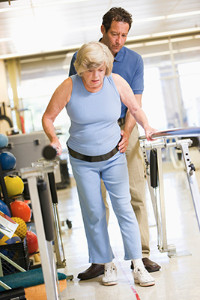 A new study by the University of Waterloo says that the elderly need up to twice as long as young adults to realize they are falling. Seniors are already at an increased risk of falling due to a number of reasons. This study helps show that once they are falling, they don’t process it as quickly as a younger person would. Consequently, there are more times that seniors can’t react fast enough to catch themselves or brace for impact. Falls are a leading cause of hospitalization among the elderly. Studies like this and increased awareness are needed to help prevent future falls among this rapidly growing group of people.
A new study by the University of Waterloo says that the elderly need up to twice as long as young adults to realize they are falling. Seniors are already at an increased risk of falling due to a number of reasons. This study helps show that once they are falling, they don’t process it as quickly as a younger person would. Consequently, there are more times that seniors can’t react fast enough to catch themselves or brace for impact. Falls are a leading cause of hospitalization among the elderly. Studies like this and increased awareness are needed to help prevent future falls among this rapidly growing group of people.
Preventing falls among the elderly is very important. If you are older and have fallen or fear that you are prone to falling, consult with Dr. Kevin Davis from Davis Foot & Ankle Centers. Our doctor will assess your condition and provide you with quality advice and care.
Every 11 seconds, an elderly American is being treated in an emergency room for a fall related injury. Falls are the leading cause of head and hip injuries for those 65 and older. Due to decreases in strength, balance, senses, and lack of awareness, elderly persons are very susceptible to falling. Thankfully, there are a number of things older persons can do to prevent falls.
How to Prevent Falls
Some effective methods that older persons can do to prevent falls include:
- Enrolling in strength and balance exercise program to increase balance and strength
- Periodically having your sight and hearing checked
- Discuss any medications you have with a doctor to see if it increases the risk of falling
- Clearing the house of falling hazards and installing devices like grab bars and railings
- Utilizing a walker or cane
- Wearing shoes that provide good support and cushioning
- Talking to family members about falling and increasing awareness
Falling can be a traumatic and embarrassing experience for elderly persons; this can make them less willing to leave the house, and less willing to talk to someone about their fears of falling. Doing such things, however, will increase the likelihood of tripping or losing one’s balance. Knowing the causes of falling and how to prevent them is the best way to mitigate the risk of serious injury.
If you have any questions, please feel free to contact one of our offices located in Springfield, and White House, TN, . We offer the newest diagnostic and treatment technologies for all your foot care needs.
Read more about Falls PreventionWhat is Gout?
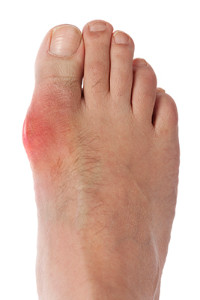 Gout, a form of arthritis, is a common, painful disorder caused by a buildup of uric acid crystals in the joints. It can occur in any joint in the body, including joints in the foot. Symptoms include pain, inflammation, and redness at the affected area. Gout generally occurs as attacks that come and go. Men often suffer from gout more than women, and attacks are more likely to come during the night. Anti-inflammatory medications or corticosteroids can help reduce pain and inflammation, and changes in diet have been found to help lessen the risk of attacks. Alcoholic beverages and foods that are rich in purines should be avoided. If you are experiencing gout symptoms in the foot, it is recommended to see a podiatrist for treatment.
Gout, a form of arthritis, is a common, painful disorder caused by a buildup of uric acid crystals in the joints. It can occur in any joint in the body, including joints in the foot. Symptoms include pain, inflammation, and redness at the affected area. Gout generally occurs as attacks that come and go. Men often suffer from gout more than women, and attacks are more likely to come during the night. Anti-inflammatory medications or corticosteroids can help reduce pain and inflammation, and changes in diet have been found to help lessen the risk of attacks. Alcoholic beverages and foods that are rich in purines should be avoided. If you are experiencing gout symptoms in the foot, it is recommended to see a podiatrist for treatment.
Gout is a foot condition that requires certain treatment and care. If you are seeking treatment, contact Dr. Kevin Davis from Davis Foot & Ankle Centers. Our doctor will treat your foot and ankle needs.
What Is Gout?
Gout is a type of arthritis caused by a buildup of uric acid in the bloodstream. It often develops in the foot, especially the big toe area, although it can manifest in other parts of the body as well. Gout can make walking and standing very painful and is especially common in diabetics and the obese.
People typically get gout because of a poor diet. Genetic predisposition is also a factor. The children of parents who have had gout frequently have a chance of developing it themselves.
Gout can easily be identified by redness and inflammation of the big toe and the surrounding areas of the foot. Other symptoms include extreme fatigue, joint pain, and running high fevers. Sometimes corticosteroid drugs can be prescribed to treat gout, but the best way to combat this disease is to get more exercise and eat a better diet.
If you have any questions please feel free to contact one of our offices located in Springfield, and White House, TN, . We offer the newest diagnostic and treatment technologies for all your foot and ankle needs.
Read more about Everything You Need to Know About GoutArkansas College Football Player Suffers Achilles Tendon Injury
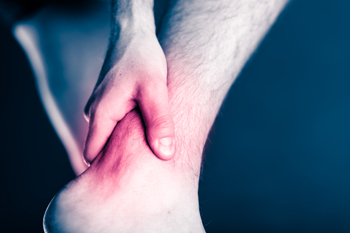 Arkansas Razorbacks wide receiver Jared Cornelius recently injured his left Achilles tendon during the Arkansas and Texas A&M Aggies game. Cornelius suffered the injury during the second half of overtime. As with most injuries of the Achilles tendon, he is expected to be out for the rest of the season. This does not bode well for the Razorbacks, as Cornelius is their leading returning wide receiver. Arkansas was defeated with a final score of 50 to 43.
Arkansas Razorbacks wide receiver Jared Cornelius recently injured his left Achilles tendon during the Arkansas and Texas A&M Aggies game. Cornelius suffered the injury during the second half of overtime. As with most injuries of the Achilles tendon, he is expected to be out for the rest of the season. This does not bode well for the Razorbacks, as Cornelius is their leading returning wide receiver. Arkansas was defeated with a final score of 50 to 43.
Achilles tendon injuries need immediate attention to avoid future complications. If you have any concerns, contact Dr. Kevin Davis of Davis Foot & Ankle Centers. Our doctor can provide the care you need to keep you pain-free and on your feet.
What Is the Achilles Tendon?
The Achilles tendon is a tendon that connects the lower leg muscles and calf to the heel of the foot. It is the strongest tendon in the human body and is essential for making movement possible. Because this tendon is such an integral part of the body, any injuries to it can create immense difficulties and should immediately be presented to a doctor.
What Are the Symptoms of an Achilles Tendon Injury?
There are various types of injuries that can affect the Achilles tendon. The two most common injuries are Achilles tendinitis and ruptures of the tendon.
Achilles Tendinitis Symptoms
- Inflammation
- Dull to severe pain
- Increased blood flow to the tendon
- Thickening of the tendon
Rupture Symptoms
- Extreme pain and swelling in the foot
- Total immobility
Treatment and Prevention
Achilles tendon injuries are diagnosed by a thorough physical evaluation, which can include an MRI. Treatment involves rest, physical therapy, and in some cases, surgery. However, various preventative measures can be taken to avoid these injuries, such as:
- Thorough stretching of the tendon before and after exercise
- Strengthening exercises like calf raises, squats, leg curls, leg extensions, leg raises, lunges, and leg presses
If you have any questions please feel free to contact one of our offices located in Springfield, and White House, TN, . We offer the newest diagnostic tools and technology to treat your foot and ankle needs.
Read more about What are Achilles Tendon Injuries